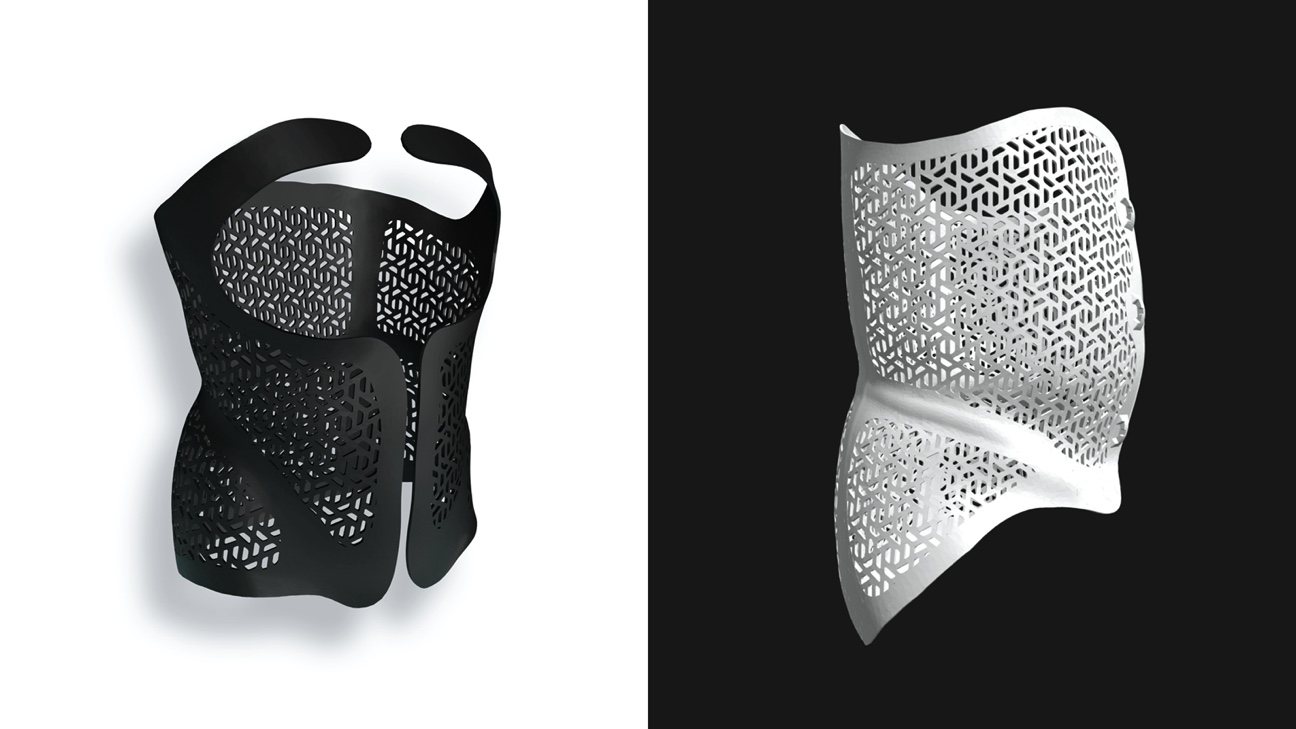Italian biomedical start-up Exos has debuted its new ‘Armor’ range of customizable 3D printed back braces at the online CES 2021 technology trade show.
The modular supports are designed to be both stronger and more breathable than existing products, while being tailorable to the needs of each patient. Leveraging 3D printing, Exos has also been able to reduce device production times by 90%, and it now hopes this will encourage more specialized clinics to adopt the technology.
Exos’ ‘Katana’ 3D printing process
Exos was set up by engineers Jacopo Ranalli and Andrea Stangoni with the aim of fabricating biomedical devices that improve the quality of life of those that wear them. The company was born when Jacopo’s brother sought a more breathable back brace, and with extensive R&D, the co-founders developed their first support.
According to the enterprising duo, many orthopedic devices are currently uncomfortable, unattractive or inaccurate, as their manual production processes are subject to human error. What’s more, the use of traditional plastic casting often limits brace efficacy, and translates into weakened adoption among patients.
To overcome these drawbacks, Ranalli and Stangoni developed a new ‘Katana’ technique that involves 3D scanning a patient to create an accurate model of their deformities. Leveraging this data, the duo are then able to FDM 3D print customized back braces in an automated way, with a sub-millimetric accuracy level.
The patent-pending production method has proven to be faster than traditional techniques, reducing lead times from 20-28 days to around 2-3 days. Exos’ approach also produces less waste than conventional processes, and its simplicity could enable collaborating clinics to fully 3D print the devices remotely in future.
 Exos claims that it can 3D print a complete customized back brace (pictured) in three days or less. Image via Exos.
Exos claims that it can 3D print a complete customized back brace (pictured) in three days or less. Image via Exos.
Exos’ fabricated Armor supports
While participating at CES as part of the Italian state-backed delegation, Exos has now revealed its inaugural range of Armor orthodontic devices. The company’s back braces, which are effectively its flagship product line, are being marketed as an improved way of treating scoliosis patients and those with spinal deformities.
Manufacturing on Demand
The devices feature holed patterns that make them breathable, and wearable for long periods without causing discomfort. Exos also claims that the supports are an average of 38% thinner and 30% lighter than normal braces, which could serve to improve the compliance of younger patients, who tend to balk at heavier designs.
Currently, the Armor braces use the same corrective mechanism as other Chêneau and Boston devices, but the Italian entrepreneurs aim to create their own designs in the future. The duo are also developing other applications for their Katana process, and they’ve identified additive splints and prosthetics as potential areas of opportunity.
By partnering with Italian clinics, Exos has commercialized its technology, and in the coming months the firm intends to build similar partnerships across Europe and the U.S. In fact, with further R&D, the company aims to scale its approach, and enable the fully-autonomous printing of tailored prosthetics by practices around the world.
Advances in additive spinal implants
Several companies also 3D print spinal implants, and recent advances in the technology have yielded devices with increasingly complex features.
Emerging Implant Technologies’ spinal implant was reportedly the first multi-use 3D printed cervical device to gain FDA approval in January 2018. Using an SLM-based technique, EIT (which is now part of Johnson & Johnson), was able to create grafts that accurately mimic the cancellous and cortical structure of bone.
More recently, orthopedic implant company 4WEB Medical added a new Stand-Alone Anterior Spine Truss System (ASTS-SA) to its additive implant portfolio. The device features an enhanced ‘dual-step’ locking system, that’s designed to provide surgeons with greater confidence during implantation procedures.
A number of surgeons also use 3D printing to fabricate spinal guides, and a group of Turkish researchers have found that such additive devices reduce the chance of complications. The team also deduced that 3D scanning had potential applications within preoperative planning, and surgical simulations.
* This article is reprinted from 3D Printing Industry. If you are involved in infringement, please contact us to delete it.
Author: Paul Hanaphy

Leave A Comment